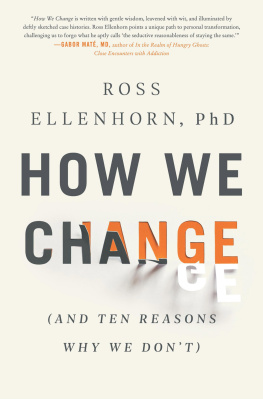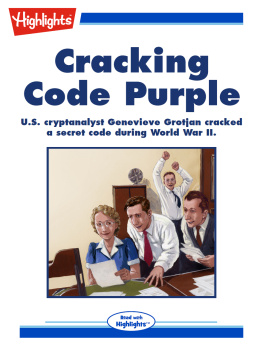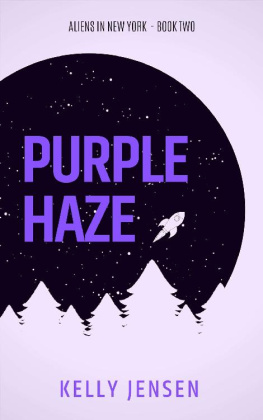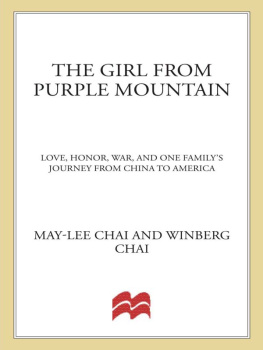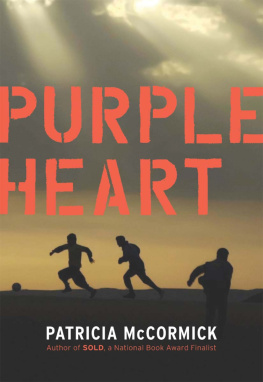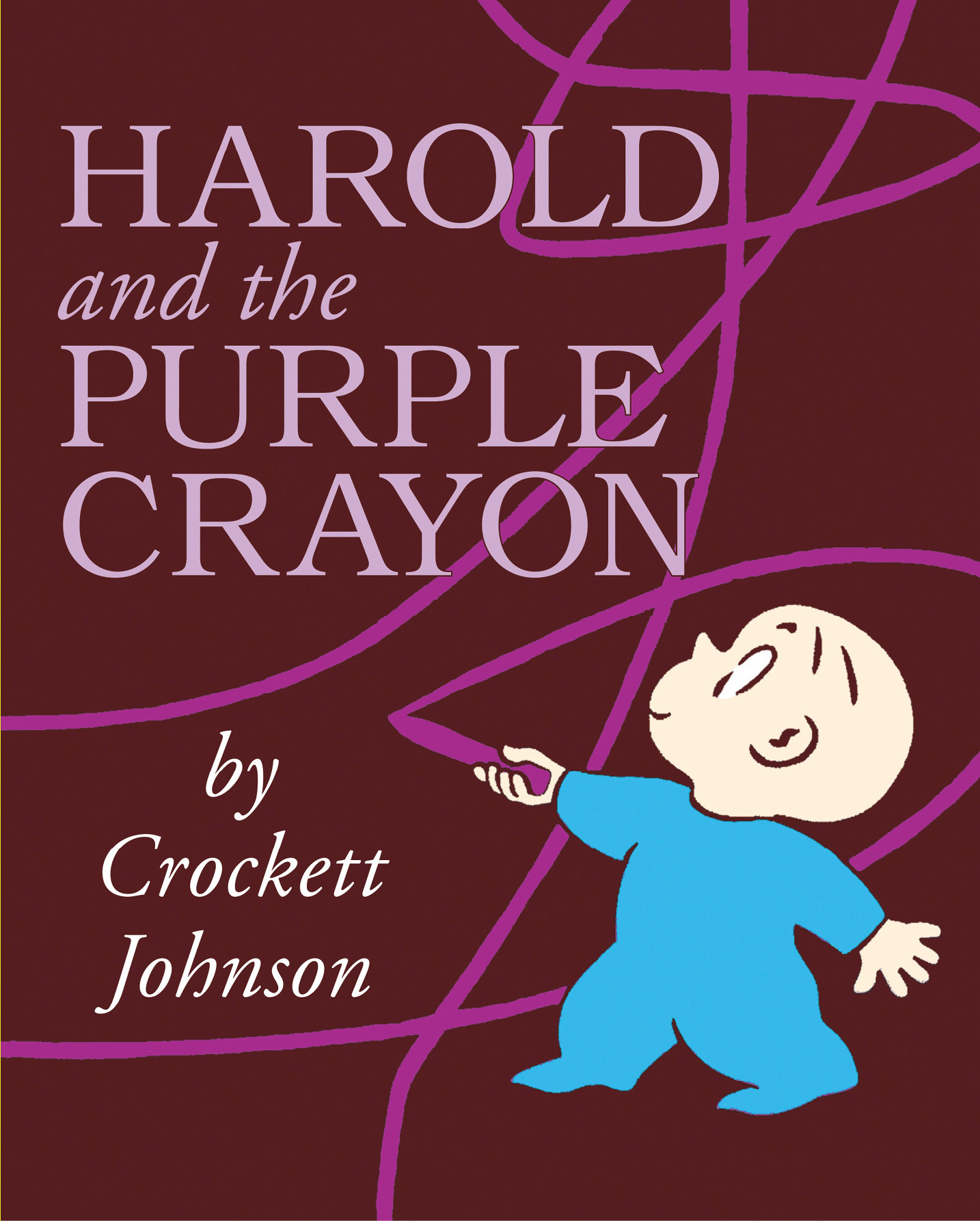Contents
Guide
To Andrew
Innovators always seek to revitalize, extend and reconstruct the status quo in their given fields, wherever it is needed. Quite often they are the rejects, outcasts, sub-citizens, etc. of the very societies to which they bring so much sustenance. Often they are people who endure great personal tragedy in their lives. Whatever the case, whether accepted or rejected, rich or poor, they are forever guided by that great and eternal constantthe creative urge.
John Coltrane
Human beings were given a secret and that secret was not how to begin, but how to begin again.
Elie Wiesel
Introduction
Harolds Birth Year
Crockett Johnsons childrens book Harold and the Purple Crayon first appeared in bookstores in 1955. Theres no date more appropriate for its publication. At the peak of a decade, on the spine of the century, where more years would soon fall behind than lay ahead, and where no one could imagine the quantum speed of our adventure from one millennium to the next, it teeters like... well... a book on the tip of an index finger. Telling a story about living ones life as art and the powers that block us from doing so, about serious play and suffocating seriousness, and about what it means to feel alive inside and what deadens our existence, its also about 1955 in America, and all that lay before andprescientlyall that lay ahead, as each of us struggles to draw meaningful and resilient existences on the blank pages of our yet unlived lives.
If you havent had the good fortune to read it, Harold and the Purple Crayon tells the story of a boy who is always alone with his crayon. When he doesnt use it to draw, the pages are nothing but bare whiteness. When he deploys it, he draws a world around him through which he embarks on a heros journey that eventually leads him home. Harold draws what he needs and what he yearns for, and along the way he inadvertently draws disasters, then draws solutions to those disasters.
Theres no doubt that little Harold is influential (my favorite example of his influence is that Prince, the genius musician and songwriter, fell in love with purple when his mother read him Johnsons book). But hes more a minor celebrity than a blockbuster star like Winnie (the Pooh) and the Cat (in the Hat). That might be one reason why Harold and the Purple Crayon can be mistaken for a really great book that does a fantastic job of urging children to use their imaginations, but not more than that.
Harold and the Purple Crayon does offer more, howevermuch more. From the first squiggle on that ever-recognizable dark crimson cover to the last empty page, this book digs deep.
Like all heroes, Harold has many ups and downs on his journey, and many challenges that he faces head on. In fact, the plot of his story is formed by a series of crises: Harold plummeting scarily from an image hes drawn, rising from those descents by drawing a way to get back up, or just pushing forward by drawing a future. So, at its outer crust, Harold and the Purple Crayon is about personal fortitude, those attributes we typically call grit and resilience. But its also about something more layered than just bouncing back or bootstrapping it.
We can recover and move forward from challenges and crises by complying with the demands of others, conforming to what everyone else is doing, and thoughtlessly following the leader. Or we can get up in a way that is self-possessed and assures that the person we were before the difficult event is still who we are after the worst of it is over. Johnsons book is about this latter form of fortitude, a refined style of connation we call dignity.
But its also deeper than that.
At the mantle of this book is a lesson about how an innovative approach to challenges is an important avenue to building a dignified life. Harolds beautiful purple renderings are not art for arts sake; he draws them to sustain who he is.
Yet Harold is more than a psychological MacGyver, combining found materials in original ways to stay afloat. Hes being original because, for him, originality is what its all about. Harold holds as sacred the unique intuitions, impulses, values, and tastes that render him Harold. Thus the thing he uses to protect his dignity and the thing hes protecting that makes him dignified are the same: his one-of-a-kind soul.
Harold and the Purple Crayon is a celebration of what I call sacred originality. This ideathat each of our unique inner lives is worth nurturing and protectingis really the core message in Johnsons book.
Well, almost...
Harold and the Purple Crayon is also about how hard it is to maintain our sacredness as original beings: the perseverance and the courage it takes to do so, often in the face of powerful forces that want us to do just the opposite. Harold repeatedly falls out of artful living into struggles with an inanimate and hollow existence, one in which he either sacrifices his originality to conform or experiences moments of isolation and dislocation. His story is thus as much about what it takes to feel alive in our humanity as it is about the terror of what happens when we dont, and how we recover from periods of emptiness in ways that resist the call to just follow along.
This makes Harold and the Purple Crayon a very modern book, and one with particularly American undertones. It reflects a shifting in the American character, described by David Riesman and his colleagues in their book The Lonely Crowd, written just five years before Harolds birthday. Considered one of the great works of American sociology, The Lonely Crowd is a sort of early riff on a theme that would repeat itself throughout the 1950s, one that reverberates through Johnsons book. Riesman et al. were concerned with where we place the psychological GPS that directs the course of our lives. For them, Americans had moved from following a tradition-directed map, charted by elders, to inner-directedness, in which they hold the purple crayon of their destiny in their hands, to an emerging mode that is outer-directed, piloting their decisions by homing in on what their neighbors were doing. For Riesman and his colleagues, Americans were losing their social freedom and their individual autonomy in seeking to become like each other. I think the author of Harold and the Purple Crayon was worried about the same thing.
Crockett Johnson began his career as an illustrator in the late 1930s creating cover art for New Masses, a leftist magazine focused primarily on fighting the growing menace of fascism, a political force that quashes inner-directedness in service of conformity. Johnson later moved to more established magazines, and then to his famous Barnaby cartoon series. Harold and the Purple Crayon was a sort of return to the subject of Johnsons earlier work. Stripped of overt political statements, the book remains a salutation to the liberating and even disobedient elements in creativity as well as a warning about the serious danger of a world that was becoming more uniform and standardized, one in which its citizens were losing touch with their originality, relinquishing their purple crayons to others.
People in 1955 were engaged in a kind of blind, desperate clinging to safety and security at any price, as Richard Yates describes it in Revolutionary Road, a novel about suburban life that takes place that year. Harold and the Purple Crayon is partly about that price and largely about a way to renege on paying it.


